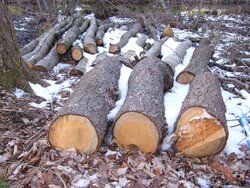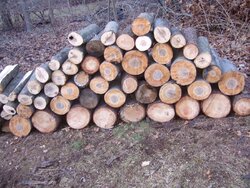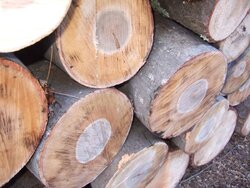i got a lead on some scrounge wood so i called the lady and it sounds like she's had the 'logs' (sounds more like thick branches) sitting over, or in, a creek to use to cross the creek. i told her i'd take a look in the morning, but, assuming the wood's been sitting in water since after the big storm in October, is it even worth trying to use in a stove?
waterlogged wood worth it?
- Thread starter toonces
- Start date
-
Active since 1995, Hearth.com is THE place on the internet for free information and advice about wood stoves, pellet stoves and other energy saving equipment.
We strive to provide opinions, articles, discussions and history related to Hearth Products and in a more general sense, energy issues.
We promote the EFFICIENT, RESPONSIBLE, CLEAN and SAFE use of all fuels, whether renewable or fossil.
You are using an out of date browser. It may not display this or other websites correctly.
You should upgrade or use an alternative browser.
You should upgrade or use an alternative browser.
- Status
- Not open for further replies.
clemsonfor
Minister of Fire
toonces said:i got a lead on some scrounge wood so i called the lady and it sounds like she's had the 'logs' (sounds more like thick branches) sitting over, or in, a creek to use to cross the creek. i told her i'd take a look in the morning, but, assuming the wood's been sitting in water since after the big storm in October, is it even worth trying to use in a stove?
If its decent size yea, just dont expect to even use it nest year maybe?
stejus
Minister of Fire
It's worth bringing your saw out there and make some cuts. Where there's evidence of rot, move on to the next. I would expect some of this to be fine.
A few years back I got some soft maple that had been laying on swampy ground for a year. It was ridiculously wet. But I split up the rounds and surprisingly they dried out quickly and burned just fine. If the wood is not rotting, go for it.
S
ScotO
Guest
I agree with the other guys. Take your saw and make a few cuts. Wet wood is fine, take it home, split and stack it. It will eventually dry out. if the wood is punky, spongy or rotted, move on...
mesuno
Member
This is an interesting question...
In another thread earlier someone mentioned that they were using freshwater driftwood. Apparently once it is out of the water it dries quickly and is excellent. In a book I flicked through recently it discussed the difference between free water within the cells and bound water in the make up of the cell walls.
Free water is lost primarily in the early stages of drying and is quite a quick process, driven by temperature and humidity gradients.
Bound water is chemically locked into the cell structure. It is lost much more slowly and depends on the cell membranes starting to decay and lose their waterproofness. This makes sense of the difference between different species having different drying times (eg oak which loses free water quite readily but bound water more slowly) due to different cell wall structures.
It occurs to me that soaking wood in water for a period may actually speed up the break down of the cell structure and eventually make the bound water easier to remove. This would make sense of observations about driftwood being good wood, and sodden logs drying to make good firewood. I've seen this myself fishing a couple of trunks from a wet patch of land in our woods - within a few months it had dried to a comparable state as the fresh cut timber.
In another thread earlier someone mentioned that they were using freshwater driftwood. Apparently once it is out of the water it dries quickly and is excellent. In a book I flicked through recently it discussed the difference between free water within the cells and bound water in the make up of the cell walls.
Free water is lost primarily in the early stages of drying and is quite a quick process, driven by temperature and humidity gradients.
Bound water is chemically locked into the cell structure. It is lost much more slowly and depends on the cell membranes starting to decay and lose their waterproofness. This makes sense of the difference between different species having different drying times (eg oak which loses free water quite readily but bound water more slowly) due to different cell wall structures.
It occurs to me that soaking wood in water for a period may actually speed up the break down of the cell structure and eventually make the bound water easier to remove. This would make sense of observations about driftwood being good wood, and sodden logs drying to make good firewood. I've seen this myself fishing a couple of trunks from a wet patch of land in our woods - within a few months it had dried to a comparable state as the fresh cut timber.
maple1
Minister of Fire
I'm kind of running into this problem now. A couple years ago we had some real wet weather that ended up flooding where some wood was piled (not stacked). It was wet there for quite a while. It was eventually all rounded up, some while still in the water. It made its way into my basement wood pile this fall, and I'm just now getting into it. Man is it soggy, even after being up out of the water for almost a year - I didn't think it was this bad when it went in. I'm resplitting very small with the electric splitter, trying to give it a few days to dry out some before I mix it with drier stuff. At least it's splitting easy - I think I need to round up a fan for down there to get more air moving.
But by all means, get the wet wood - split it small & stack it in a good drying spot. It will be good for next year.
But by all means, get the wet wood - split it small & stack it in a good drying spot. It will be good for next year.
thanks for the advice everyone. i'm heading over there in a little bit. the lady emailed last night saying there was other downed wood laying around the property, so it may be worth it either way.
DanCorcoran
Minister of Fire
maple1,
With a fan, you'll get faster drying, but higher humidity in the basement...just an fyi, if that's a concern.
With a fan, you'll get faster drying, but higher humidity in the basement...just an fyi, if that's a concern.
maple1
Minister of Fire
DanCorcoran said:maple1,
With a fan, you'll get faster drying, but higher humidity in the basement...just an fyi, if that's a concern.
This morning after stoking the first load I dug out a box fan that hadn't been used in over 5 years, and set it up against the pile of resplits I did the day before. Just checked a couple of humidity meter things - in the living room right above the wood it's about 35%, in the basement it's just over 50. Not too worried, the fan should get the moisture in the air and I have quite a bit of air being sucked up my chimney about 15 feet away from the fan, being replenished by outside air coming in another window down there.
That's some decent looking wood BTW, I'd say it's well worth it.
Looks like regular old Eastern White Pine in decent condition to me.
Cut, split, stack ( I wait for the bark to be falling off, just like with oak) it should be ready to go.
Some of the smaller smoother skinned grey ones in the background look more like maple or beech.
Cut, split, stack ( I wait for the bark to be falling off, just like with oak) it should be ready to go.
Some of the smaller smoother skinned grey ones in the background look more like maple or beech.
Realstone
Lord of Fire
+1Mesuno said:This is an interesting question...
In another thread earlier someone mentioned that they were using freshwater driftwood. Apparently once it is out of the water it dries quickly and is excellent. In a book I flicked through recently it discussed the difference between free water within the cells and bound water in the make up of the cell walls...
just got back from round #1 of cutting and this will end up being double what i thought it would be. a lot of those smoother logs in the background are 6-9" in diameter and look perfectly fine inside. a few were frozen together, but a solid whack separated them. i got through the pine and half of the other stuff and am gonna go back after i sharpen the chain. just wish the walk back the car wasn't slightly uphill and 50 yds away! hope my dolly makes it through the day...
firefighterjake
Minister of Fire
From what I can see . . . at least from the logs in the foreground . . . you should have no problems as they don't look bad at all in the picture.
pics of the latest score. took two trips moderately loaded. was good to see uniform walls of wood in the back of my wagon instead of the random sizes like before. i'm not sure what the lighter, smooth-barked wood is. someone said beech and it fits the description of American Beech; was in that boggy area by a creek and it's heavy. maybe all that water's weighing it down ha!
Attachments
Realstone
Lord of Fire
maple1
Minister of Fire
- Status
- Not open for further replies.
Similar threads
- Replies
- 20
- Views
- 2K
- Replies
- 107
- Views
- 10K
- Replies
- 40
- Views
- 3K




